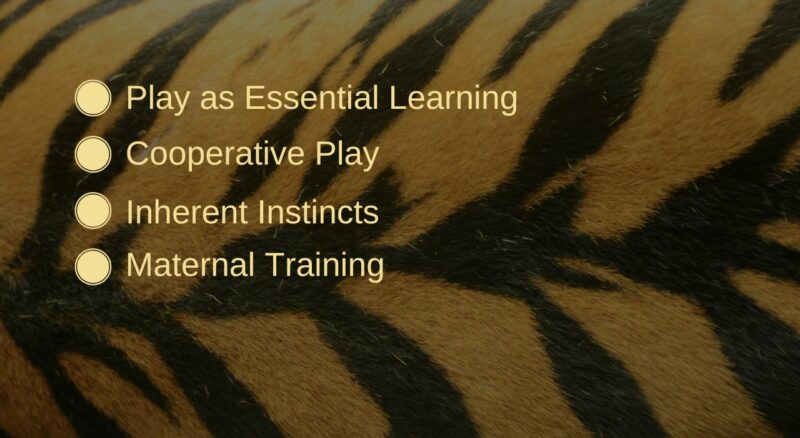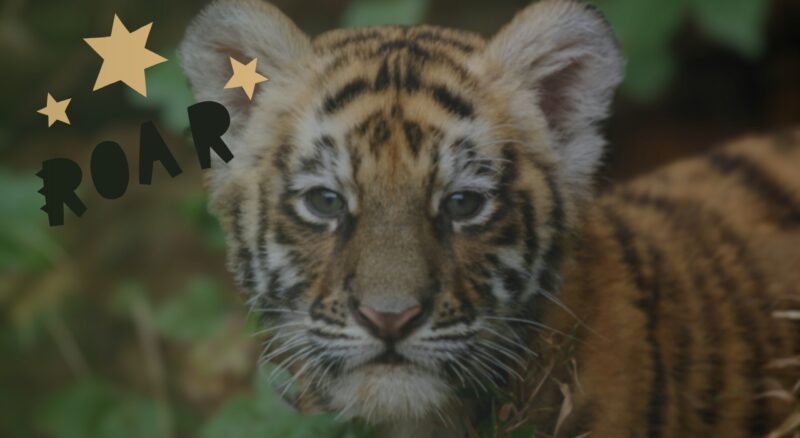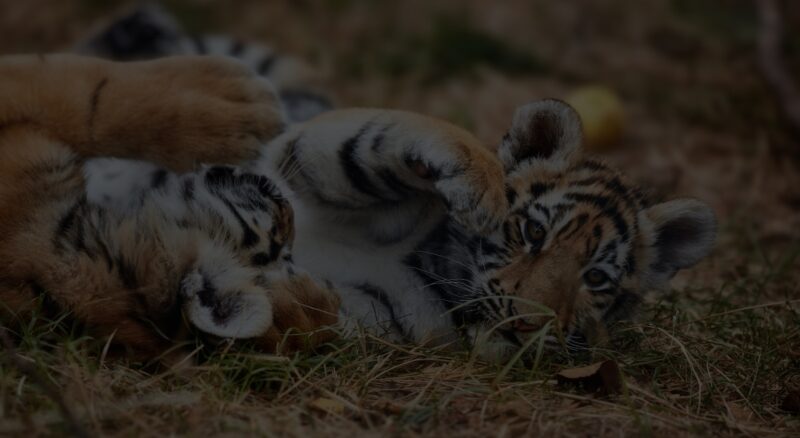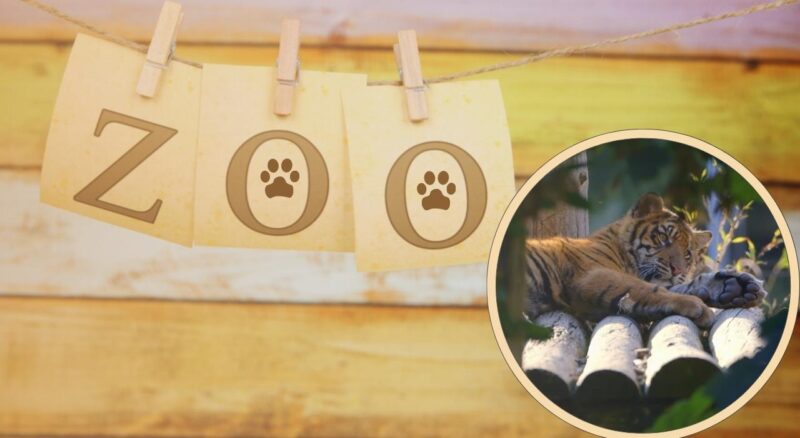Welcome to the enchanting world of baby tigers in the wild! As a devoted animal lover with a deep passion for feline creatures, I have had the privilege of observing these awe-inspiring animals up close and have gathered valuable insights from wildlife blogs and experts.
I’ll share ten intriguing facts about baby tigers that will leave you amazed by their charm, uniqueness, and the wonders of nature. From their playful antics to their remarkable growth, each fact unveils a glimpse into the captivating lives of these majestic cubs, backed by information from wildlife experts.
1. Adorable Yet Fierce:

Tiger cubs start their lives as playful bundles of fur, engaging in boisterous games with their siblings. Through these playful activities, they develop essential hunting skills, laying the foundation for their survival as they mature into formidable predators.
- Play as Essential Learning: Play is a crucial aspect of tiger cub development. During the first few months of their lives, tiger cubs spend a significant amount of time engaging in playful activities. Studies have shown that play helps them develop essential hunting skills, such as stalking, pouncing, and ambushing, which are vital for their survival as they grow older.
- Cooperative Play: Tiger cubs engage in cooperative play with their siblings, which contributes to their physical and cognitive development. They practice social interactions, learn boundaries, and establish hierarchies within the litter, which prepares them for future interactions with other tigers in the wild.
- Inherent Instincts: Even from a young age, tiger cubs display innate hunting instincts. Their playful behaviors, like stalking and pouncing on leaves or insects, mirror the actions they will use when hunting prey as adults. These instinctive behaviors are hardwired into their DNA, ensuring their ability to survive in the wild.
- Maternal Training: Mother tigers play a critical role in their cubs’ education. They initiate hunting lessons by bringing live prey to the den, allowing the cubs to practice their hunting techniques under her guidance. Observing and learning from their mother’s actions, the cubs develop the necessary skills to become effective predators.
2. Born Blind and Vulnerable:
Tiger cubs are born blind, with their eyes closed for the first one to two weeks of their lives. This blindness is a common trait among many carnivore species, including big cats. While their eyesight is still developing, tiger cubs heavily rely on their sense of smell, touch, and hearing to navigate their environment. These senses are remarkably well-developed even at birth, allowing them to detect their mother, locate her teats for nursing, and interact with their siblings.
3. Unique Coat Patterns:
One of the most enchanting aspects of baby tigers is their distinctive coat patterns. According to wildlife blogs, just like adult tigers, each cub’s coat is adorned with one-of-a-kind stripes, akin to a fingerprint for humans. These patterns provide effective camouflage in the wild, helping them blend seamlessly into their natural surroundings and making them formidable predators.
The coat colors, usually a mixture of black, brown, and white, can vary depending on the tiger’s subspecies, as noted by wildlife experts.
4. Milestone: First Roar:

As baby tigers mature, they go through several developmental milestones, and one of the most remarkable is their first roar. Wildlife experts suggest that around the age of two to three months, they begin practicing their vocalizations, starting with soft, tentative growls.
Over time, these growls transform into the iconic, resonant roars we associate with adult tigers. It’s a momentous event that marks their growing confidence and prepares them for communication with their family and, later in life, potential mates and rivals, as explained by experts in tiger behavior.
5. Teeth and Claw Development:
Just like human babies, baby tigers also experience teething. According to wildlife blogs, at around two to three weeks old, their baby teeth start to emerge, and by six months, they begin losing them as their permanent teeth grow in.
The tiny cubs also possess sharp, retractable claws, which they learn to control as they grow. These claws will eventually become formidable tools for hunting and self-defense as they become powerful adult predators, as highlighted by experts in tiger anatomy and behavior.
Baby Tiger Tooth Development:
| Age (weeks) | Tooth Development |
|---|---|
| 2-3 | Baby teeth start to emerge |
| 24 | Permanent teeth start growing |
| 25-30 | Baby teeth begin to fall out |
6. Caring for the Cubs:
In the wild, mother tigers play a vital role in raising their cubs, providing all the care they need during their early months. Wildlife experts closely monitor the tiger family from a distance, ensuring the cubs’ well-being and gathering valuable data.
At around 8 weeks, the cubs start accompanying their mother on hunting expeditions, learning crucial survival skills through observation. These playful interactions with their siblings simulate future hunts and build their confidence.
The mother imparts not only hunting techniques but also the wisdom needed to thrive in their environment. This nurturing environment showcases the resilience of nature’s cycle, emphasizing the importance of conservation efforts to protect these magnificent creatures for future generations.
7. Night Vision:

Tiger cubs have an extraordinary trait: Excellent night vision. As they venture into the world and begin exploring their surroundings, this remarkable adaptation becomes increasingly apparent. With eyes uniquely designed to adapt to low-light conditions, tiger cubs can fearlessly navigate through the darkness of their habitats.
During the cooler nighttime hours, when many other creatures seek shelter, tiger cubs come to life, playfully engaging with their siblings and honing their hunting instincts through mock chases. Their pupils dilate widely, maximizing light intake, while their retinas are rich with light-sensitive cells, allowing them to see clearly even in the dimmest environments.
This exceptional night vision is an essential tool in their journey to adulthood, helping them develop the stealth and precision necessary for successful hunts. As they grow into independent individuals, this inherent ability will serve them well, ensuring they can confidently prowl through their territory under the moonlit skies, and carry forward the legacy of their powerful lineage as nature’s enigmatic nocturnal hunters.
8. Growing Appetites:
As the cubs grow, so do their appetites! According to wildlife blogs, during their early months, they primarily rely on their mother’s milk. However, as they reach around eight weeks old, they begin to experiment with meat. In the wild, this transition to solid food marks a critical phase in their development as independent hunters, as noted by experts in tiger nutrition.
| Age (weeks) | Diet |
|---|---|
| 0-8 | Mother’s milk |
| 8-24 | Milk and soft meat |
| 24+ | Solid meat and water |
9. Sibling Rivalry:
While baby tigers are incredibly close to their littermates during their early months, they eventually develop independent personalities. As they grow, sibling rivalry becomes apparent as they navigate their way to adulthood, as observed and documented by wildlife experts.
This rivalry serves a crucial purpose, as it prepares them for potential territorial disputes and mating competitions in the wild. It’s fascinating to observe how these power struggles unfold and influence their future roles within the pride, as explained by experts in tiger social dynamics.
10. The Rise & Fall of The Tiger Population:
Sadly, the odds are stacked against tiger cubs in the wild, as they face numerous threats from predators and environmental factors. Understanding the challenges they encounter highlights the urgency of conservation efforts aimed at protecting these majestic creatures for future generations.
Conservation Importance:
The development of tiger cubs into fierce predators is not only a wonder to behold but also holds great significance for conservation efforts. As tiger populations continue to decline due to habitat loss and poaching, understanding the early stages of their lives becomes crucial for conservationists to protect these magnificent creatures effectively.
Role in Ecosystem:

As tigers mature into powerful hunters, they play a pivotal role in maintaining the ecological balance of their habitats. As apex predators, they regulate prey populations, preventing overgrazing and preserving biodiversity in their ecosystems. This makes tigers essential in the health and functioning of their natural environments.
| Year | Estimated Tiger Population | Decline Rate |
|---|---|---|
| 2000 | 6,000-7,000 | N/A |
| 2005 | 5,000-6,000 | 10% |
| 2010 | 3,000-4,000 | 40% |
| 2015 | 2,500-3,000 | 50% |
| 2020 | 2,000-2,500 | 60% |
Recent data from the International Union for Conservation of Nature indicates a promising surge in tiger populations, potentially witnessing a remarkable 40% rise from 3,200 Tigers in 2015 to 4,500 in 2022, despite facing severe threats. This encouraging trend hints at a potential resurgence for these majestic big cats in the Year of the Tiger, marking the first noteworthy increase in their numbers in several decades.
FAQs
Can Baby Tigers Swim?
Yes, baby tigers are naturally skilled swimmers. They take to the water at a young age, often following their mother’s lead. Swimming is an essential survival skill for tigers, as they may need to cross water bodies to access new hunting territories and escape potential threats.
Do Baby Tigers Have Any Natural Predators?
In the wild, baby tigers are vulnerable to various predators, especially during their early months when they are still small and dependent on their mother. Common predators of tiger cubs include crocodiles, leopards, and other larger carnivores. However, the presence of their protective mother and the safety of the den help reduce these risks significantly.
How Much Weight Do Baby Tigers Gain in Their First Year of Life?
During their first year of life, baby tigers can gain a significant amount of weight. On average, they may grow from a birth weight of around 2 to 3 pounds to approximately 100 pounds by the end of their first year.
Are Baby Tigers Curious About Their Surroundings?
Yes, baby tigers are incredibly curious creatures. As they explore their surroundings, they exhibit curiosity toward new sights, sounds, and smells. This curiosity aids in their learning process and helps them adapt to the environment they will later navigate as independent hunters.
How Far Can Baby Tigers Walk in A Day?
Baby tigers may cover short distances during their playful antics, but they do not venture far from their den until they are a few months old. As they grow older, they accompany their mother on hunting expeditions and may walk several miles a day as they learn to navigate their territory.
Are Baby Tigers Kept in Zoos for Conservation Purposes?

Some zoos participate in tiger conservation efforts by housing and breeding captive tigers to support genetic diversity and provide educational opportunities for visitors. However, it’s essential to ensure that the conditions in the zoos are conducive to the tigers’ well-being and replicate their natural habitat as closely as possible.
How Does Climate Change Affect Baby Tiger Habitats?
Climate change can have significant impacts on baby tiger habitats. Rising temperatures, altered precipitation patterns, and changes in vegetation can disrupt the balance of their ecosystems and affect prey availability. Conservation efforts must address these challenges to ensure the long-term survival of tiger populations.
Conclusion
Caring for baby tigers in the wild has been an immensely rewarding experience, allowing me to witness firsthand the wonders of nature and the resilience of these awe-inspiring animals, as shared by wildlife blogs and experts. From their adorable antics to their impressive growth, baby tigers offer a captivating journey that leaves us humbled by the beauty and complexity of the natural world.
As we continue to protect and conserve these magnificent creatures, let us also learn from them about the importance of unity, family bonds, and the delicate balance that sustains all life on our precious planet.
